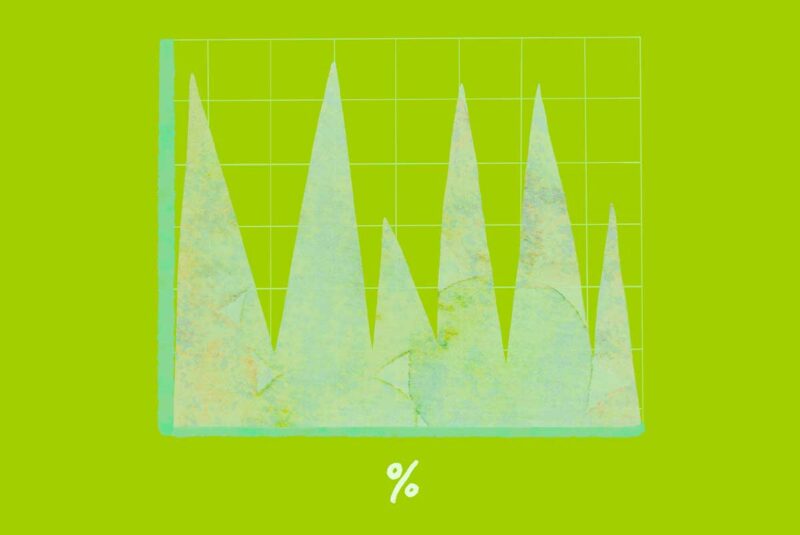Saving money for retirement is an important goal. Your future depends on it.
The U.S. Department of Labor estimates that most of us will need between 70% and 90% of our pre-retirement income annually in retirement. Only around 40% of that income will be taken care of by Social Security.[1]
40% is a nice start. But how will you get the rest of the money you need to retire?
Investing in an individual retirement account (IRA) is a great way to save for retirement, supplementing Social Security and an employer’s 401(k) retirement plan. For people without an employer-sponsored retirement plan, an IRA becomes even more important.
We’ll explain the different types of IRAs, how they work, eligibility requirements, tax advantages and why you should invest in an IRA.
What Is an IRA?
An IRA is an investment account with tax benefits to help you save for retirement. With an IRA, also referred to as an individual retirement arrangement, your money can grow and compound faster than it would in a regular savings account.
An IRA is a lot like a 401(k). Both an IRA and 401(k) are retirement accounts, but an IRA is a personal retirement account, while a 401(k) is sponsored and managed by an employer.
Almost anyone can open an IRA through a bank, credit union, investment company, insurance company or online brokerage.
How Do IRAs Work?
Money deposited into an IRA is called a contribution. There are limits to how much you can contribute to an IRA each year. For most people, IRA contribution limits are $6,500 per year if you’re under 50 years old and up to $7,500 per year if you’re 50 or older.[2]
Depending on the financial institution managing the account, contributions can be invested in a variety of ways. Typical investment choices include stocks, bonds, mutual funds and exchange-traded funds (ETFs). How the money is invested depends on your retirement timeline, risk tolerance and investment goals.
Usually, a financial advisor guides the account holder through investment options. Though many times, investments can be managed by the account holder directly.
The main types of IRAs are traditional IRAs and Roth IRAs. Traditional IRA contributions are tax-deferred. Roth IRA contributions are made with after-tax dollars, but withdrawals are tax-free.
What are tax-deferred investments?
When an investment is tax-deferred, you only pay income taxes when you withdraw the money rather than paying it upfront. And any earnings from a tax-deferred investment aren’t taxed until you withdraw it.
Traditional IRA investments are tax-deferred. As long as the money remains in the account, any growth – such as interest, dividends or increases in value – won’t be taxed as earned income each year.
What is a traditional IRA?
A traditional IRA is a retirement investment account funded with pre-tax contributions. Money in the account grows and isn’t taxed until it’s withdrawn at age 59½ or later.
Contributions can usually be deducted from your taxable income in the tax year they are made. Doing so will lower your adjusted gross income (AGI) for tax purposes.
At the time of withdrawal, any money taken out gets taxed at the account holder’s current income tax rate. These are “qualified” withdrawals, meaning there are no capital gains taxes.
However, withdrawals made prior to age 59½ are “unqualified” withdrawals. These can be taxed as earned income at the account holder’s current tax rate, plus an additional 10% early withdrawal fee.[3] There are certain exceptions to the 10% fee, such as paying for higher education or the disability or death of the account owner.[3]
Many advisors say traditional IRAs are the way to go if you anticipate you’ll be in a lower tax bracket in retirement than when you make the contributions.
What is a Roth IRA?
A Roth IRA is a retirement account funded with after-tax dollars. Since the money you put into the account has already been taxed, you won’t pay taxes on withdrawals you make after age 59½.
However, not everyone qualifies to make Roth IRA contributions. There are income limits. If you’re a single tax filer making more than $153,000, you’re not allowed to contribute to a Roth IRA. The same is true for married filers earning $228,000.[4]
Many advisors say Roth IRAs are preferable if you think your tax rate will be higher in retirement than when you make the contributions.
Like traditional IRAs, Roth IRAs have tax implications and a 10% penalty for unqualified early withdrawals.[5]
What is the 5-year rule?
To withdraw funds from a Roth IRA penalty-free and without taxes, the account has to be at least five years old[6] – even if you’re 59 ½ or older.
What is the 60-day rule?
You can withdraw Roth IRA contributions before the age of 59½, but you have to pay it back within 60 days.
Pros and Cons of Investing in an IRA
Investing in an IRA has advantages and disadvantages. Here are the main pros and cons:
PROS Pros of Investing in an IRA👍
IRAs are an additional way to save for retirement, supplementing Social Security benefits, your 401(k) and any other savings accounts you have.
IRAs typically give you more choices for investing your money than savings accounts. Plus, you’ll have total control over the investments.
Depending on whether you have a traditional or Roth IRA, your account growth can be tax-deferred or tax-free.
CONS Cons of Investing in an IRA👎
You can only contribute $6,000 to an IRA each tax year – or $7,000 if you’re over 59½. This might work when you’re young, but if you’re closer to retirement, there’s not a lot of time for the money to grow.
You can only contribute $6,000 to an IRA each tax year – or $7,000 if you’re over 59½. This might work when you’re young, but if you’re closer to retirement, there’s not a lot of time for the money to grow.
Not only can early withdrawals be taxed, you’ll typically incur a 10% penalty fee.
Distributions (withdrawals) from a traditional IRA will be taxed at your income tax rate in retirement. It can be difficult to determine whether that rate will be high or low, and which IRA, traditional or Roth, might be the most advantageous.
Are There Other Types of IRAs?
Traditional and Roth IRAs are the two main types of IRA accounts. But there are other types you should be familiar with:
SEP IRA
A simplified employee pension (SEP) IRA is for self-employed workers, including freelance or contract workers and small business owners.
Tax rules and penalties for early withdrawals are the same as a traditional IRA. However, contribution limits are different. The maximum yearly contribution to a SEP IRA is $61,000 or 25% of your income, whichever is less.[8]
SIMPLE IRA
A Savings Incentive Match Plan for Employees (SIMPLE) IRA is a retirement savings account set up by employers with fewer than 100 employees who receive at least $5,000 in annual income.[9]
Employees can contribute up to $14,000, with a “catch up” contribution of $3,000 for employees over 50 years old.[9]
Unqualified withdrawals are taxed like with a traditional IRA, and a 10% penalty would apply. If the account holder makes a withdrawal within the first 2 years of the account’s establishment, the penalty increases to 25%.[8]
Spousal IRA
A spousal IRA is for married couples. It allows a working spouse to contribute to an IRA for a spouse who is’t working. The contribution limits and catch-up contribution rules are the same as for traditional or Roth IRAS, as well as the penalties and tax implications.
Rollover IRA
A rollover IRA is a traditional or Roth IRA that contains funds transferred from a 401(k). Rollovers usually happen when someone leaves a place of employment. Rolling over the funds allows the account holder to avoid withdrawal taxes and fees.
It’s Never Too Early to Plan for Retirement
An IRA can be a great investment if you avoid early withdrawal penalties and are comfortable with the annual contribution limits. The earlier you contribute, the longer your money will grow and recover from any possible setbacks.
The Short Version
- An IRA is an investment account with tax benefits to help you save for retirement
- Both an IRA and 401(k) are retirement accounts, but an IRA is a personal retirement account, while a 401(k) is sponsored and managed by an employer
- Traditional IRA contributions are usually tax-deductible. Roth IRA contributions are made with after-tax dollars, but withdrawals are tax-free
Department of Labor. “Top 10 Ways to Prepare for Retirement.” Retrieved August, 2022 from https://www.dol.gov/sites/dolgov/files/ebsa/about-ebsa/our-activities/resource-center/publications/top-10-ways-to-prepare-for-retirement.pdf
Internal Revenue Service. “IRA FAQs.” Retrieved August 2022 from https://www.irs.gov/retirement-plans/retirement-plans-faqs-regarding-iras
Internal Revenue Service. “Retirement Topics – Exceptions to Tax on Early Distributions.” Retrieved August 2022 from https://www.irs.gov/retirement-plans/plan-participant-employee/retirement-topics-tax-on-early-distributions
Internal Revenue Service. “2022 Limitations Adjusted as Provided in Section 415(d), etc.” Retrieved August 2022 from https://www.irs.gov/pub/irs-drop/n-21-61.pdf
Internal Revenue Service. “Topic No. 557 Additional Tax on Early Distributions From Traditional and Roth IRAs.” Retrieved August 2022 from https://www.irs.gov/taxtopics/tc557
Internal Revenue Service. “Publication 590-B (2021), Distributions from Individual Retirement Arrangements (IRAs).” Retrieved August 2022 from https://www.irs.gov/publications/p590b
Internal Revenue Service. “Retirement Topics – Catch-Up Contributions.” Retrieved August 2022 from https://www.irs.gov/retirement-plans/plan-participant-employee/retirement-topics-catch-up-contributions
Internal Revenue Service. “Simplified Employee Pension Plan (SEP).” Retrieved August 2022 from https://www.irs.gov/retirement-plans/plan-sponsor/simplified-employee-pension-plan-sep
Internal Revenue Service. “SIMPLE IRA Plan.” Retrieved August 2022 from https://www.irs.gov/retirement-plans/plan-sponsor/simple-ira-plan




